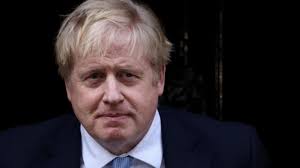Floating the naira, before it sinks
The biggest test posed by pegging the naira’s exchange rate is that it messes up with the relationship between domestic prices as a tool for allocating resources.


Much of the changes required, therefore, to enable the naira float freely are the same ones required to fix the economy. They are changes that have to be initiated from the fiscal side, particularly reforms to the economy’s structure: how it is resourced; the nature and efficiency of its conversion processes; what it produces; and the markets it sells into.
One of the more telling pieces of conversation that I have been privy to around the economy’s foreign exchange woes is from a friend regaling me with dialogue he had late last year with the “Mallam” from whom he buys dollars on the parallel market. Having lost much hope in the naira as a place to salt away his wealth, he began actively buying dollars a few years back. Sometime in November 2021, he asked his agent to source US$2,000 for him. The agent’s reply, “But, Oga, the thing too cost” was as instructive, then, as was my friend’s response: “Buy am, jo. You been tink say these people sabi wetin dem dey do?” My friend was so sure that the naira will exchange at US$1:N600 by year-end 2022. It was US$1:N470 when this transaction was consummated.
In the debate between those who are calling for the naira’s free float and those who defend the current managed float arrangement, it is this aspect of the exchange dynamics that is to the front and centre. So long as the naira has more than one price, it will continue to support arbitrage activity ― putting up costs without delivering corresponding gains to domestic economic actors. Besides, in combination with rampant domestic inflation, the gap between the naira’s official and parallel market prices will continue to make it difficult to store value in the local currency. Then, there is the pressure on the balance on the gross external reserve, as the Central Bank of Nigeria struggles to keep the rate in the official market policy-bound.
But by far the biggest test posed by pegging the naira’s exchange rate is that it messes up with the relationship between domestic prices as a tool for allocating resources. Ordinarily, a change in relative prices signals changes in consumers’ preferences for goods and services, all other variables remaining the same. In the same extent, these price indicators drive the direction of investment, with pricier goods and services (implying juicier returns on investment) getting first dibs on new money. A managed float, such as we currently run, distorts this process ― reflecting the policymaker’s understanding of the balance between relative prices, rather than where the market would have it. It is small wonder, therefore, that capital importation into the country has continued to fall every year since 2019, with the foreign direct investment component the worst hit.
Also Read: Round and Round the Economic Garden
…root-and-branch changes will have to be made to the public expenditure management process. Improvements in governments’ revenue generation (without further crimping businesses ― widening the tax base and walking back on easy-to-collect but regressive taxes like VAT) will top the list, here. Followed by improvements in the efficacy of government’s spending.
This does not mean, though, that defenders of our current managed exchange rate arrangement are just crying “Wolf” when they say that a float might see the naira’s exchange rate all over the floor ― with severe implications for the economy’s cost profile. In part, that is one consequence of the long term absence of “macroeconomic reasonability” in our husbandry of the domestic economy. Much of the success of macroeconomic policymaking is about the forward guidance provided by policymakers and the expectations that these then anchor in the markets. In the Nigerian incidence, it is not just that both these ingredients are absent. It is that the resulting stew is full of perverse incentives. The zero-bound interest rate policy for instance is an invitation to dollarise domestic savings that has not, in spite of its best intentions, meaningfully boosted output growth.
These connectedness between different parts of the economy mean that if the naira’s exchange rate will become market-determined at some point, it can only be part of a clearly thought through and coordinated set of reforms to the economy. Of course, these reforms will, at the monetary policy space, include understanding the level at which interest rates help keep inflation down while supporting full employment. It will then require that this be marked up by the rate of core inflation.
Beyond this, however, root-and-branch changes will have to be made to the public expenditure management process. Improvements in governments’ revenue generation (without further crimping businesses ― widening the tax base and walking back on easy-to-collect but regressive taxes like VAT) will top the list, here. Followed by improvements in the efficacy of governments spending. It will help that leakages and graft are plugged and reduced, if not eliminated. But it will matter more that the return on government spending rises. These should see deficits drop to levels both more manageable and consistent with the economy’s needs. The portmanteau of reforms that will support a floating naira would also require that the policymakers’ bulimia for borrowing is aligned with the economy’s capacity to absorb such inflows.
The pandemic may have invited central banks across the world to cross red lines in the financing of their domestic economies, but it is a fair bet that the restraints in the CBN Act on the monetary authority’s ability to monetise the fiscal deficit still make sense as we seek to transition to a private sector-led, market-based economy.
Much of the changes required, therefore, to enable the naira float freely are the same ones required to fix the economy. They are changes that have to be initiated from the fiscal side, particularly reforms to the economy’s structure: how it is resourced; the nature and efficiency of its conversion processes; what it produces; and the markets it sells into. It matters, then, that the current government’s borrowing, especially when you include the large ways and means component from the central bank has been implicated in unstable and rapidly rising prices.
We must agree a process to rein this in, including putting in place a process for determining the federal government’s medium-term capital expenditure need, and capping the annual public expenditure borrowing requirement at a proportion of this. On its own, an increase in government spending is not necessarily all negative. Combined, though, with a central bank that is subordinate to the finance ministry and a large budget deficit it begins to present adverse effects on domestic prices.
What does this mean for the ethos around central banking independence? The pandemic may have invited central banks across the world to cross red lines in the financing of their domestic economies, but it is a fair bet that the restraints in the CBN Act on the monetary authority’s ability to monetise the fiscal deficit still make sense as we seek to transition to a private sector-led, market-based economy.
Uddin Ifeanyi, journalist manqué and retired civil servant, can be reached @IfeanyiUddin.







